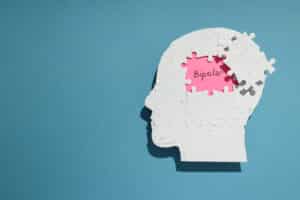Everyone feels embarrassed or inadequate sometimes. What if these feelings are the norm and not the exception? What happens when jobs and friendships are affected by these feelings?
The explanation could be social anxiety or avoidant personality disorder. Keep reading to learn the similarities and differences between avoidant personality disorder vs social anxiety.
Social Anxiety
Forty million Americans 18 and older are dealing with anxiety. It’s the most common mental health disorder in the United States. Social anxiety is a specific type of anxiety disorder.
Social anxiety means a person experiences negative physical and/or emotional responses from social situations. These reactions result in fears of rejection or judgment in social settings.
The DSM 5 has laid out the following ten criteria for social anxiety disorders diagnoses:
- Fear of being harshly judged in new social situations such as a first date, oral presentation, or job interview in adults. Children may cringe, cry, or appear physically uncomfortable when interacting with their peers.
- Fear of being socially rejected as a result of anxiety display(s)
- Consistently upset by social interaction
- Reactions of fear and anxiety are much larger than the situation warrants
- Anxiety and/or fear aren’t caused by medication or substance abuse
- Anxiety and/or fear aren’t caused by another diagnosis or disorder
- Fear and/or anxiety must be consistently present for six months or more
- Extremely reluctant or avoidant of social situations as a result of anxiety. May endure social situations with great discomfort
- Fear and anxiety are not related or proportionate with another medical condition that could cause a person to be self-conscious, such as a noticeable facial scar or marking.
- Anxiety and/or fear inhibit functional working or personal relationships, or other areas of life
Clinicians can also note that social anxiety is specific to a certain situation or scenario.
Avoidant Personality Disorder
The DSM 5 defines Avoidant Personality Disorder (APD) as having four or more of the following traits.
- Avoiding social situations or personal interactions out of fear of rejection, disapproval, or criticism.
- Must be sure of their acceptance or will not be involved.
- Holding back in close relationships out of fear of being shamed or mocked.
- Preoccupation about fears of being criticized or rejected in social settings
- Unable to fully engage in new relationships or social settings because of feeling inadequate.
- A view of themself as less than others, socially awkward, or undesirable/unappealing.
- Unusually avoidant of new activities or risks out of fear of embarrassment.
Personality disorders are different from anxiety disorders. Keep reading to find out how the main differences between these two similar disorders.
Avoidant Personality Disorder vs Social Anxiety
Avoidant personality disorder and social anxiety can look identical from the outside. Both cause anxiety in social situations. Both can keep people from performing at work or having meaningful relationships.
The main difference between APD and social and social anxiety is the motivation behind the behaviors. Why does a person avoid social situations? What makes it so difficult for them to have meaningful relationships?
Belief of Inferiority
Individuals with APD truly believe they are inferior to others. This leads to hypersensitivity to any kind of criticism. A friendly joke or side comment could be taken as a personal attack.
Because of this, those with APD hold back in relationships. Fearing rejection, they often remain isolated from social situations, even though they want to participate.
APD can disrupt working environments as well. Fellings and beliefs of their inadequacy create an intense need to avoid any criticism, scrutiny, or environment where failure can happen.
The Anxiety Disorder Difference
Those with social anxiety have an anxiety disorder. Their anxiety can be triggered by a number of different things. They don’t hold a belief that they are less than others.
Individuals with social anxiety may be self-conscious of how they appear to others. Those dealing with social anxiety may stutter, freeze, or chatter endlessly when triggered.
Social anxiety often causes great frustration among people who suffer from it. They want to engage with the world and enjoy social situations. They believe themselves as worthy of happiness and equal to others.
Help and Healing
Those with APD should begin their journey to healing with a qualified mental health professional. Treatment will likely begin with cognitive behavior therapy(CBT).
Through CBT, individuals with APD will be able to discover the root of their beliefs about themselves. Patients and professionals should take their time and be patient with the process. Together, the individual with APD and their professional can create a plan for growth and improvement.
Social anxiety is often treated with medications. CBT, or talk therapy, can also be an effective treatment for social anxiety. Those suffering from social anxiety may also benefit from systematic desensitization.
Both diagnoses may also engage in exposure therapy as part of their treatment plan. After learning effective coping skills, individuals can slowly re-enter social situations. This looks different for each individual.
There is Always Hope
The symptoms of APD often keep sufferers from sharing their true symptoms with a professional. But there is always hope. By working with qualified mental health professionals, those with APD and social anxiety can experience successful careers and meaningful relationships.
The team at Southern California Sunrise Recovery Center can help. Through diagnoses and treatment, our qualified professionals will work with you to get your life back.
Not sure if you have anxiety? Take our anxiety self-test to find out. Or, give us a call at (866) 523-2250. We’d love to partner with you on your road to recovery.







